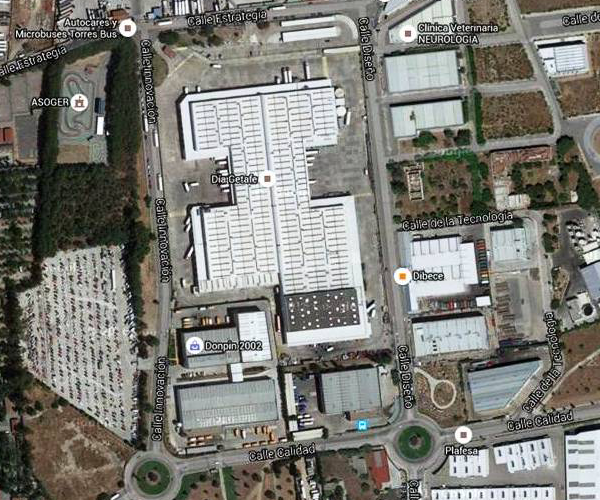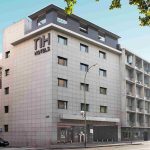
Energy Monitoring in a Distribution Centre for Dia Supermarkets
DIA, a leader in retail distribution in Spain, with more than 4,900 stores, has a strong commitment to preserving the environment. One of the pillars of this commitment is the reduction of energy consumption. In this case, the company needed a solution for one of its 24 distribution centres in Spain, so DIA contacted Satel Spain because of its experience in the monitoring of large buildings and industrial environments.
The aim was to control the energy consumption of the facilities and improve energy efficiency. To this end, the solution proposed by Satel Spain was based on identifying the main sources of consumption, installing meters to capture the relevant data and managing these datas to maximise the energy savings. Temperature and humidity sensors were also installed.

OVERVIEW OF THE DIA LOGISTICS CENTRE IN GETAFE -MADRID, SPAIN- WITH MORE THAN 60,000 SQUARE METERS OF FLOOR AREA
DIA (Distribuidora Internacional de Alimentación, S.A.)
Retail chain with more than 7,000 stores in the world and over 67,000 employees.
The company in Spain:
- > 4.900 stores
- > 29.000 employees
- Turnover >5.900 M €
- 24 distribution centres
Energy monitoring in the centre located in Getafe (Madrid, Spain) one of the largest logistics centres of the chain, with an area of more than 60,000 m2.
- Electricity submetering: power (active, reactive, apparent), power, power factor, current, voltage, frequency. (X9)
- Tariff meter (electricity) (x1)
- Temperature (x2)
- Humidity (x2)
- Datalogger SenNet DL171
- Electricity meters SenNet meter
- Radio modems Satelline 1870 E
- CAD antennas
- Temperature-humidity sensors for outdoor uses
DIA is gradually introducing monitoring systems in its stores to detect inefficiencies and reduce energy consumption.
The company contacted Satel Spain to request a solution for its logistics warehouse that DIA has in Getafe.
DIA wanted to identify the main sources of consumption of the centre and detect the inefficiencies.
The customer also wanted to meter the temperature and humidity outside the fruit warehouse and outside the cold storage plant.
Given the size of the centre (more than 300 m from one end to the other) and since it was not possible to interrupt the operation of the centre to install a monitoring system, the customer was looking for a solution able to communicate over long distances and minimally invasive.
After analyzing the data provided by the customer and after a technical visit to the facilities, the technicians of Satel Spain identified the main sources of consumption of the facilities and proposed a monitoring solution based on RF, because of the long distances between distribution boards. (More than 300m)
Cable data transmission was dismissed owing to the installation cost. WiFi-based solutions were also dismissed, due to the short range and GPRS because of the unwanted recurrent costs.
The main sources of consumption metered were:
- Electricity meter from the utility company (tariff meter)
- Main switch of the warehouse
- Main switch of the cold plant (positive and negative refrigeration)
- Positive-cold compressors
- Negative-cold compressors
At these points, SenNet Electricity Meters were installed.
In order to transmit the data captured, radio modems Satelline 1870 E were used. To enhance the range of communications external antennas and masts were installed. Furthermore, two outdoor sensors were installed to measure temperature and humidity outside the cold plant. The data captured are sent via radio to a datalogger, which can send them to a management platform.
Satel Spain offered the customer a solution with the following characteristics:
- Scalable: the customer can add more devices in the future (up to 100 per datalogger).
- Open: the solution can read devices from other manufacturers, so the customer is not restricted to SenNet products. The data captured can be sent to third-party platforms, in this case, the client decided to continue using an external platform.
- Reliable: communications do not depend on external operators (telephone or internet), the data logger receives data directly from the radio modems.
- Non-invasive: it was not necessary to interrupt the power supply during the installation.
The main sources of consumption of the building are being monitored and any potential inefficiencies can be detected
- Installation without any interruption of supply
- Solution provided in less than a month (from the day of request to the set-up)
- Inexpensive and quick installation, without laying electrical cables
- No recurrent costs (such as telephony or maintenance costs).





